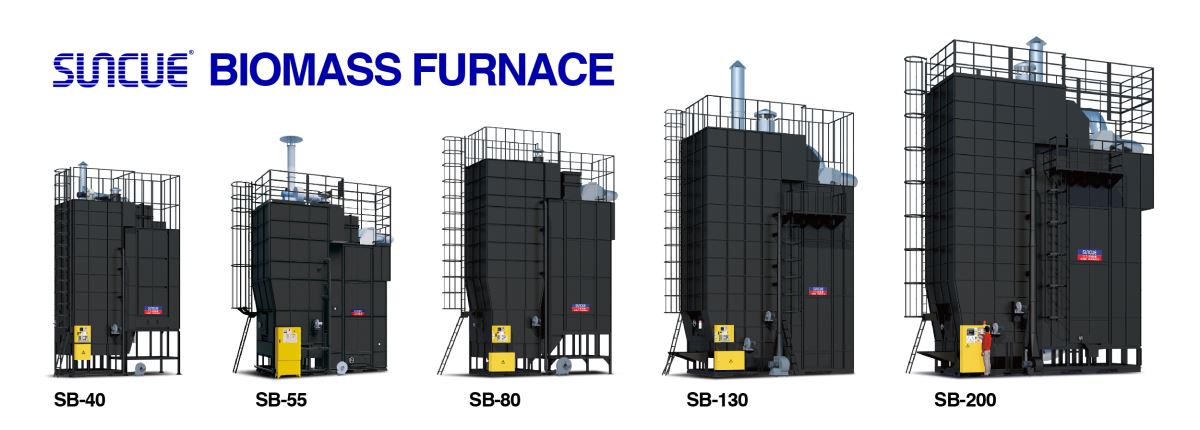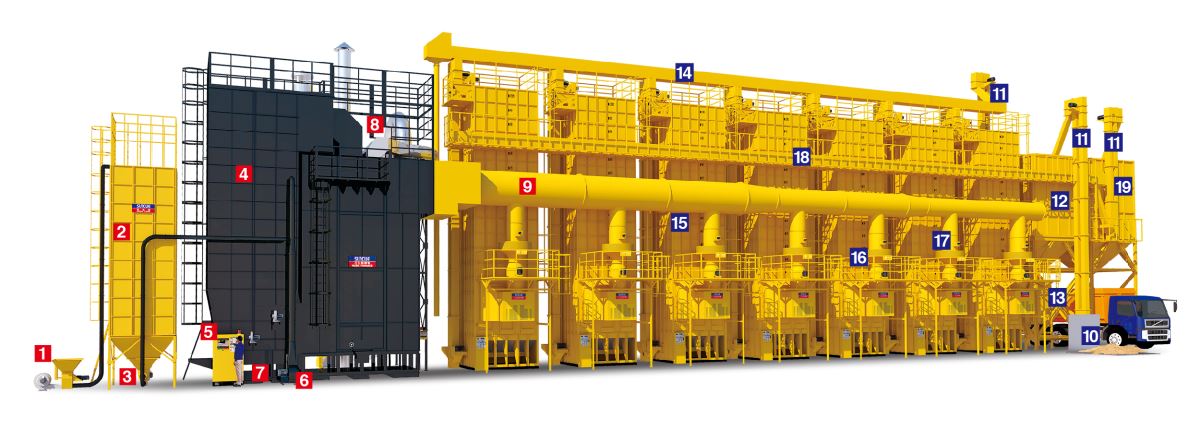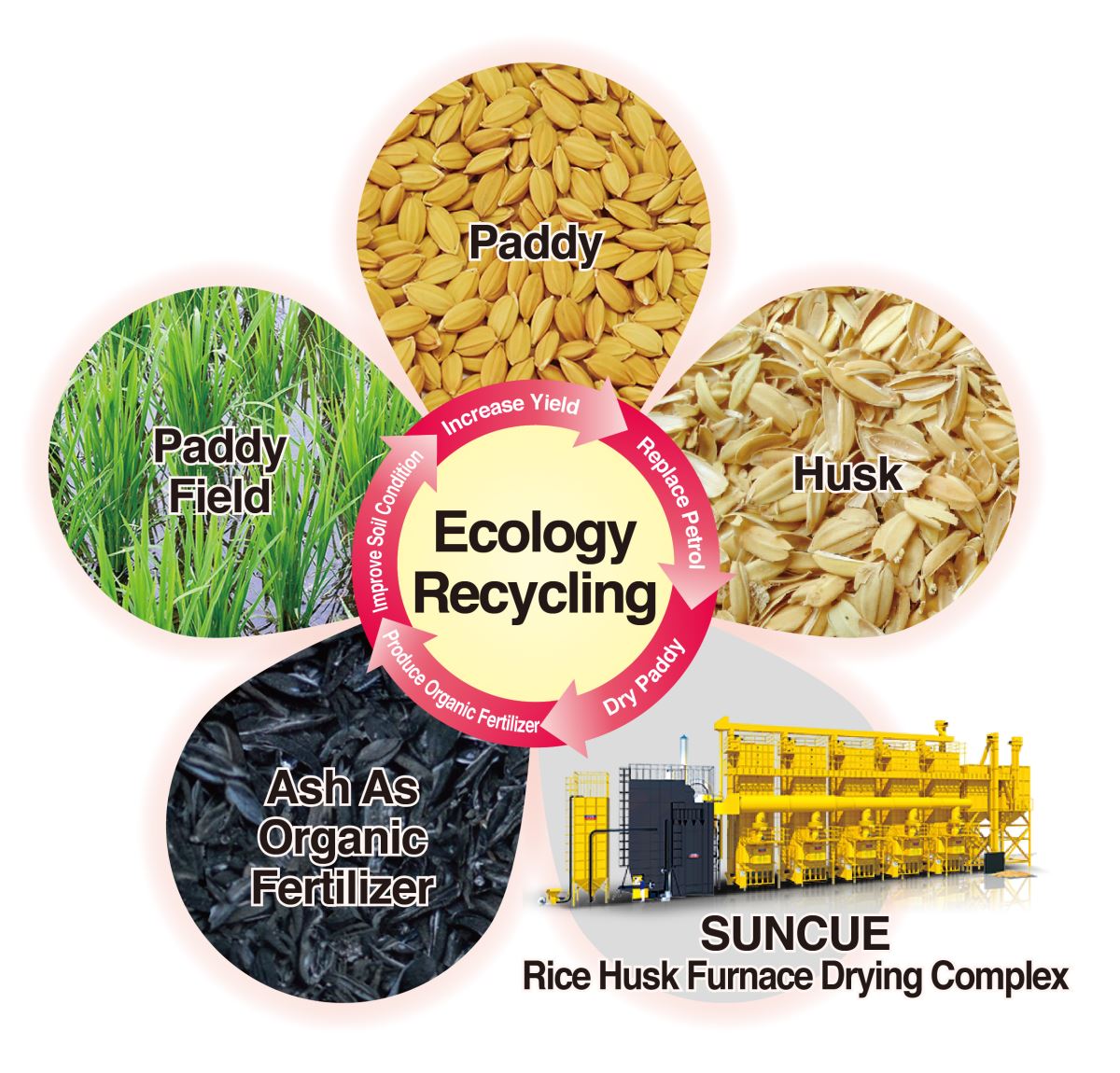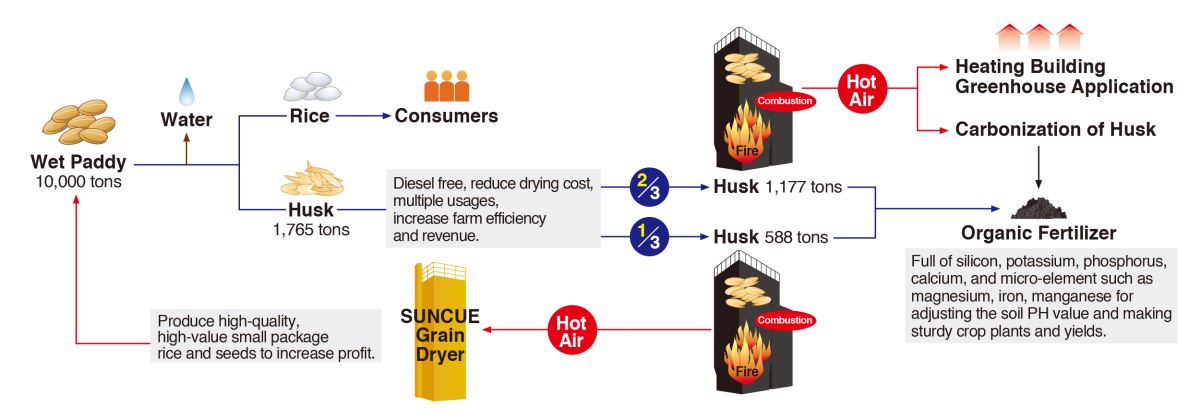- Product
Product Details
Husk Furnace〈SB Series〉
SB-80
About this product
Energy Saving, Environmentally Friendly, Carbon Reduction
Exclusively Patented in Taiwan, USA, Japan, Korea, China, Southeast Asia…etc.
Easy operation-One operator can manage thousands of tons of grains per day
Recycling in the eco-system & Endless care for the Earth
The only choice for producing best quality small-package rice with the lowest cost
Product Introduction
Biomass Furnace SB-80 • Using rice husk as biomass fuel greatly reduces drying cost.
Fuel is free if the rice husk is from your own rice mill.
• The clean and genuine indirect hot air with automatic temperature control allows a low temp.,
even and fast drying. Reduces broken rice, improves milling yield and rice appearance.
• Appraisals from worldwide users: the dried paddy is naturally fragrant and the rice tastes more tender.
It is the real organic rice.
• Foolproof design. Durable for heavy-duty and requires low maintenance.
Allowing consistent high-quality rice from the 1st, 100th to 1000th batch. 
The only choice for producing best quality small-package rice with the lowest cost
Low Drying Cost Significantly reduces drying cost! You're no longer at the mercy of rising oil prices. Easy Management Automatic computerized control, fool-proof design, easy operation. Best Rice Quality Drying at constant temperature produces the most high-quality rice, paddy seeds and wheat seeds.
High Selling Price
Indirect and clean hot-air at low temperature can produce the sanitary, reliable of small package rice. Selling price will be high. Energy Saving, Environmentally Friendly, Carbon Reduction
Energy Saving
For example, assuming a rice mill's annual production is 10,000 tons, and 200,000 liters of diesel are needed for drying, which will cost up to USD$ 167,643 of fuel in 1 year.
Buying husk for drying, the drying cost will only be the one-fifth of the diesel cost. If self-milled free husk is used, the fuel cost will be 0.
The diesel price shown here is CPC's diesel price as of March 17th, 2025, which is about USD$ 0.84 per liter.
Environmentally Friendly & Carbon Reduction
Annually reduce 540 tons of CO2 emission, which equal to the volume that a 36 hectares of forest can absorb.
Exclusively Patented in Taiwan, USA, Japan, Korea, China, Southeast Asia…etc. SUNCUE Rice Husk Furnace Drying Complex

| 1 Husk Tank Feeder | 2 Husk Tank |
| 3 Husk Feeder | 4 Rice Husk Furnace SB-200 |
| 5 Main Control Box | 6 Auxiliary Air Blower |
| 7 Auto Ash Discharger | 8 Cyclone |
| 9 Hot Air Duct | 10 Dumping Pit |
| 11 Bucket Elevator | 12 Wet Grain Silo |
| 13 Precleaner | 14 Loading Chain Conveyor |
| 15 32-ton husk type grain dryer | 16 Micro Air Adjuster |
| 17 Hot Air Damper | 18 Unloading Chain Conveyor |
| 19 Dry Grain Silo | |
Recycling in the eco-system & Endless care for the Earth

 Specifications
Specifications| Item | SB-80 |
Max. Thermal Energy
Approx. Kcal/hr | 800,000 |
quivalent to Diesel Consumption
Approx. liter/day
Diesel thermal energy = approx. 8,400 Kcal/liter | 2,286 |
Husk Consumption
Approx. kg/day under max. combustion
Husk thermal energy = approx. 3,300 Kcal/kg | 6,480 |
Ash Discharge
Approx. kg/day under max. combustion | 864 |
Reduction of CO2 Emission
Approx. ton/day | 5.9 |
| Power Consumption kW | 10.5 |
| Net Weight Approx. in ton | 17.4 |
| Dimension L×W×H mm | 6,515×3,520×8,569 |
Furnace Connecting Capacity
dryer tons | Commercial Paddy | 42~96 |
| Paddy Seed, Wheat Seed | 48~128 |
| Safety Devices | Abnormal Combustion Sensor, Flame Sensor,
Automatic Abnormal Safe Guard,Thermal Relay,
Rotation Sensor, Control Fuse |
Dimension Unit mm 
Product Remark
◆ Max. thermal energy, husk consumption and ash discharge production listed are for reference only. Actual data will differ upon variety, moisture content and impurity.
◆ The specification and graph are for reference only. Actual specification of SUNCUE product shall be based on the Sales Confirmation which customers sign and delivered products.
◆ The maximum heat output of each rice husk furnace is approximately 2.7 kg of CO2 emission per liter of diesel with a running time of 24 hours per day as calculation basis. Actual values may vary due to the users' various using factors.
Related Products